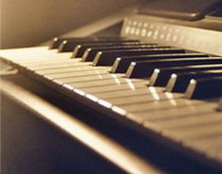Piano Sheets > John Ellison Sheet Music
Free Sheet Music for songs by John Ellison
Top Piano Sheets
It's Too Late by Carole King Sheet Music
Sheet Music for Malaguena by Isaac Albeniz
My First Kiss by 3oh!3 Ft Kesha (Ver. 2) Piano Sheets
Chris Tomlin Piano Music for How Great Is Our God
Afterlife by Avenged Sevenfold Piano Sheets
Christmas Music Piano notes for Once In Royal David's City
Ramble On - Led Zeppelin Piano Sheets
Scott Joplin Piano Music for Chrysanthemum - The (Ver. 2)
Davy Crockett Piano notes for Ballad Of Davy Crockett - The
Lone Jack - Pat Metheny (Ver. 3) Sheet music
Sheet Music for Malaguena by Isaac Albeniz
My First Kiss by 3oh!3 Ft Kesha (Ver. 2) Piano Sheets
Chris Tomlin Piano Music for How Great Is Our God
Afterlife by Avenged Sevenfold Piano Sheets
Christmas Music Piano notes for Once In Royal David's City
Ramble On - Led Zeppelin Piano Sheets
Scott Joplin Piano Music for Chrysanthemum - The (Ver. 2)
Davy Crockett Piano notes for Ballad Of Davy Crockett - The
Lone Jack - Pat Metheny (Ver. 3) Sheet music
Newest Piano Sheets
Piano Sheet for The Story by Brandi Carlile
Coldplay Piano Sheets for 42 (Ver. 2)
Helena - My Chemical Romance Piano Sheets
18 Till I Die by Bryan Adams (Ver. 3) Piano Music
Who Am I - Casting Crowns Piano music
Morning Has Broken - Cat Stevens (Ver. 5) Sheet music
Jesus Paid It All by Elvina Hall Piano Music
Jordin Sparks And Chris Brown Piano Music for No Air (Ver. 4)
Owl City Sheet Music for Honey And The Bee
Second Chance by Shinedown (Ver. 3) Piano Sheets
Coldplay Piano Sheets for 42 (Ver. 2)
Helena - My Chemical Romance Piano Sheets
18 Till I Die by Bryan Adams (Ver. 3) Piano Music
Who Am I - Casting Crowns Piano music
Morning Has Broken - Cat Stevens (Ver. 5) Sheet music
Jesus Paid It All by Elvina Hall Piano Music
Jordin Sparks And Chris Brown Piano Music for No Air (Ver. 4)
Owl City Sheet Music for Honey And The Bee
Second Chance by Shinedown (Ver. 3) Piano Sheets
Random article
Sheet music, theory and beyond When you take a look at a piano music sheet for the first time, all you will see is beautiful written characters which make absolutely no sense to you. And if you are a keen observer, you will notice that there are many types of circles associated with the piano music sheet language. Sheet music belonging to the instrument piano also consists of incomplete circles connected together by one or a collection of lines. Plus there are other symbols which will appear totally strange to you. So what are they all about and what do they mean? (More...)
Pictures




